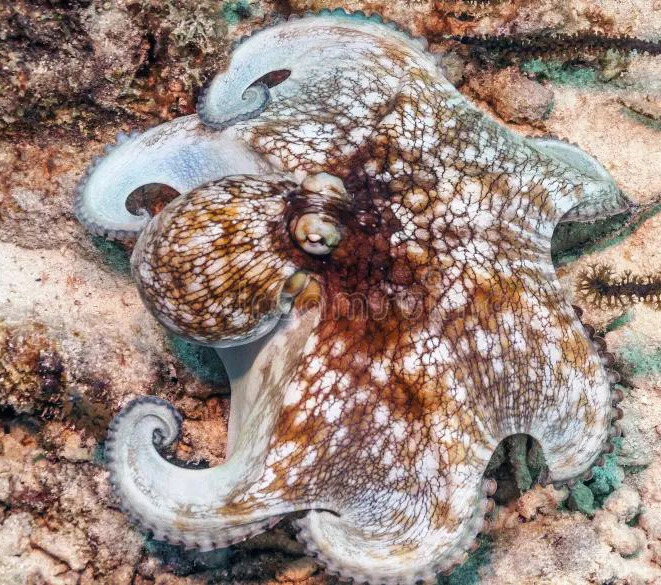The Caribbean Reef Octopus: A Master of Disguise and Ocean Intelligence
Welcome to the fascinating world of the Caribbean Reef Octopus, a true marvel of the marine world. This intelligent cephalopod, known scientifically as Octopus briareus, calls the coral reefs and grass beds of the western Atlantic, Bahamas, Caribbean, and northern South America its home. Let’s dive into the life of this amazing creature that’s as brainy as it is beautiful.

A Look at the Caribbean Reef Octopus
Size and Weight
The Caribbean Reef Octopus is no small fry. With an average length of 30-60 cm and weighing up to 3 kg, it’s larger than most of its Caribbean cousins. But it’s not just its size that’s impressive. This octopus is a master of disguise, thanks to its specialized skin cells called chromatophores. It can change color and texture to blend seamlessly with its surroundings, making it a hide-and-seek champion.
Habitat and Distribution
These octopuses are not just confined to one spot. They’re found throughout the western Atlantic and Caribbean, from Florida to Brazil. They prefer shallow waters up to 30 meters deep but can also venture into deeper waters up to 100 meters. Their homes? Coral reefs, seagrass beds, rocky areas, mangrove forests, and estuaries.
Diet and Hunting Techniques
The Caribbean Reef Octopus is a carnivore with a diverse menu. It preys on fish, crabs, lobsters, clams, and mollusks. It’s an opportunistic hunter, using its camouflage to ambush prey or its eight arms to probe crevices in the reef. It’s even known to use tools like coconut shells to trap small fish – talk about being resourceful!
Predators and Defense Mechanisms
Life isn’t easy when you’re a tasty morsel for sharks, large fish, and other cephalopods. But the Caribbean Reef Octopus isn’t defenseless. It can release a cloud of ink to confuse predators and make a quick getaway. Its camouflage and mimicry skills also help it avoid becoming someone else’s dinner.
Reproduction and Lifespan
Spring and summer are love seasons for these octopuses. Males use a specialized arm called the hectocotylus to transfer sperm to the female. After laying her eggs, the female guards them until they hatch about a month later. Sadly, these creatures have a short lifespan of about a year, with the female often dying shortly after the eggs hatch.
Behavior and Adaptations
These octopuses are night owls, active mostly at night. They use their excellent vision and sense of touch to navigate and hunt. Their ability to change color and texture isn’t just for hiding; it’s also a way to communicate. And when they need to move fast, they use jet propulsion – expelling water from their mantle cavity to zoom away.
Conservation Status
Currently, the Caribbean Reef Octopus isn’t listed as endangered or threatened. However, climate change, overfishing, habitat destruction, and pollution pose significant threats. While some marine protected areas aim to safeguard them, more research and conservation efforts are needed.



